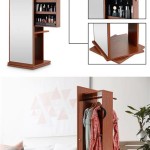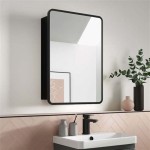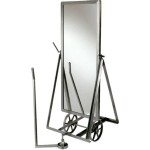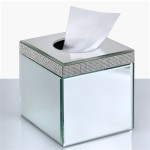Gluing a Mirror to a Door: A Comprehensive Guide
Attaching a mirror to a door can significantly enhance a room's aesthetics and functionality. Whether it's a full-length mirror on a bedroom door or a smaller decorative mirror on a cabinet, proper installation is crucial for safety and longevity. This guide provides a detailed overview of the process, highlighting essential considerations and best practices for achieving a secure and lasting bond.
Choosing the Right Adhesive
Selecting the appropriate adhesive is paramount for successfully gluing a mirror to a door. The adhesive must be strong enough to support the mirror's weight and withstand environmental factors like humidity and temperature fluctuations. Traditional construction adhesives may not be suitable due to their potential to damage the mirror's backing. Instead, opt for specialized mirror adhesives. These are formulated to prevent silvering damage and provide a robust, long-lasting bond. Neutral cure silicone sealants are another viable option, offering excellent adhesion and flexibility. When selecting an adhesive, consider the mirror's size and weight, as well as the door material.
Before purchasing any adhesive, carefully examine the manufacturer's instructions and ensure its compatibility with both the mirror and the door material. Some adhesives are specifically designed for certain types of mirrors or door surfaces. Using an incompatible adhesive can lead to poor adhesion, damage to the mirror or door, and potential safety hazards.
Preparing the Surfaces
Proper surface preparation is critical for achieving a strong and lasting bond. Both the door and the back of the mirror must be thoroughly cleaned and dried before applying the adhesive. Any dust, dirt, grease, or residue can interfere with the adhesive's bonding capabilities. Clean the door surface with a mild detergent and water, then rinse and dry completely. For the mirror, use a glass cleaner specifically designed for mirrors to avoid leaving streaks or residue. Inspect both surfaces for any imperfections, such as loose paint or damaged areas. Address these issues before proceeding with the adhesion process.
For wooden doors, lightly sanding the area where the mirror will be attached can improve adhesion. Be sure to remove any dust created by sanding before applying the adhesive. If the door has a glossy finish, consider lightly scuffing the surface with fine-grit sandpaper to create a better bonding surface. For metal or composite doors, ensure the surface is clean and free of any rust or corrosion.
Applying the Adhesive and Securing the Mirror
Once the surfaces are prepared, apply the adhesive according to the manufacturer's instructions. For mirror adhesives, typically, a series of dots or lines are applied to the back of the mirror, ensuring even distribution. Avoid applying the adhesive too close to the mirror's edges, as this can cause it to squeeze out and create a mess. For larger mirrors, consider using a combination of adhesive and mirror clips or mounting tape for added support during the curing process. These additional supports can help prevent the mirror from slipping or shifting while the adhesive sets.
Carefully position the mirror on the door, aligning it precisely before applying pressure. Once the mirror is in place, apply firm and even pressure for the duration specified by the adhesive manufacturer. Use shims or spacers if needed to maintain consistent spacing around the edges of the mirror. Avoid moving or adjusting the mirror once it's been placed, as this can disrupt the bonding process. Allow the adhesive to cure completely before using the door or applying any additional weight or stress to the mirror. The curing time can vary depending on the adhesive used, so refer to the manufacturer's instructions for specific guidance.
Safety Precautions
Safety should be a top priority when gluing a mirror to a door. Always wear appropriate safety gear, including gloves and eye protection, when working with adhesives. Ensure adequate ventilation in the work area to prevent inhalation of fumes. If using a solvent-based adhesive, take extra precautions to avoid fire hazards. Keep the area well-ventilated and away from open flames or sparks. Dispose of any used adhesive containers or materials properly according to local regulations.
When handling large or heavy mirrors, it is recommended to have assistance to prevent accidents. Lifting heavy mirrors can strain the back and increase the risk of dropping the mirror and causing injury. Before attaching the mirror, carefully assess the door's weight-bearing capacity. Overloading the door with a heavy mirror can damage the hinges or the door itself. If necessary, reinforce the door or choose a lighter mirror to ensure safety and stability.

Framing Out A Mirror That S Mounted On Door Young House Love

Framing Out A Mirror That S Mounted On Door Young House Love

How To Glue A Mirror Door Ehow

Framing Out A Mirror That S Mounted On Door Young House Love

Framing Out A Mirror That S Mounted On Door Young House Love

Glue A Floor Length Mirror To An Old Door Frame Plus Lots Of Other Cool Salvaged Http Bathroommod Doors

Framing Out A Mirror That S Mounted On Door Young House Love

Mirror On The Wall A Girl And Glue Gun

Framing Out A Mirror That S Mounted On Door Young House Love

Over The Door Hanging Mirrors A Comprehensive Guide








